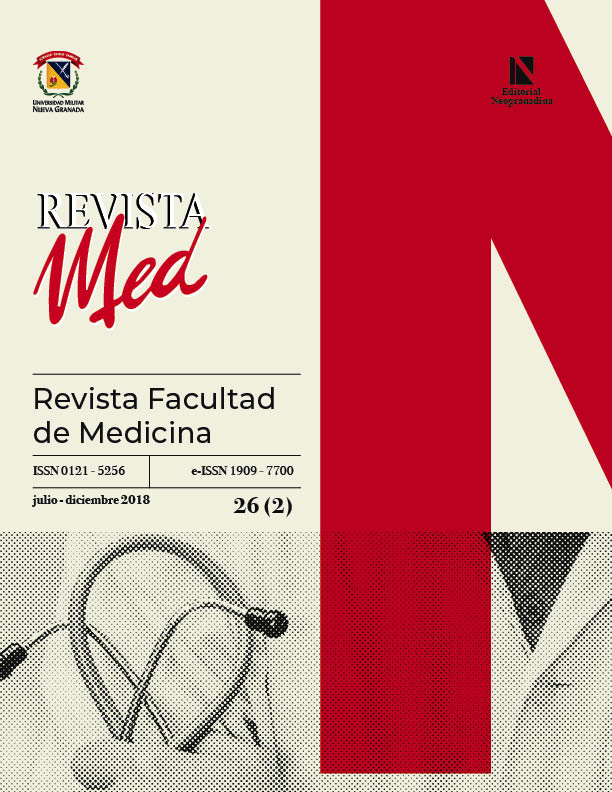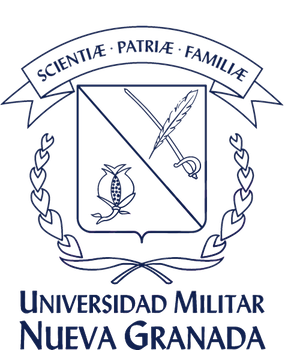Laughter Therapy: a Complementary Therapy to Western Medicine
Abstract
Disease and hospitalization are stressful factors, institutions have a duty to comprehensively manage patients’ health. For this there are multiple complementary therapies such as laughter therapy. These are based on humor for health promotion and are responsible for entertaining people, bringing smiles where usually there is discontent. Its benefits are multiple and its contraindications are few, which makes it a cost-effective strategy to improve life quality during hospitalization. This article, aims not only to show the most relevant issues in laughter therapy, but also to motivate research, as well as to create awareness among readers of the importance of supporting this new boom.
Downloads
References
Mauricio HC, Rivera JG, Arriaga DCC, Sánchez GV. Investigación materno infantil La risoterapia como intervención de enfermería , para el control del dolor en niños en la aplicación de quimioterapia. Investig Matern Infant. 2011;3(3):128-31.
Fernández-Castillo A, López-Naranjo I. Transmisión de emociones, miedo y estrés infantil por hospitalización. Int J Clin Heal Psychol. 2006;6(3):631-45.
Lissete CT, Marlitt RB. Influencia de la risoterapia en las características psicológicas y sociales del niño escolar. 2008;1(1):19-25.
Christian R, Susanibar C, Balarezo G. Risoterapia : Un nuevo campo para los profesionales de la salud Laugh Therapy : A new field for healthcare professionals. 2004;17(2):7-11.
Sanabria, Alfonso P, Sc PM. Reflexiones alrededor del concepto de promoción de la salud y prevención de la enfermedad. 2011;
Lizasoáin O, Ochoa B. Repercusiones de la hospitalización pediátrica en el niño enfermo. 2003;75-85.
Naranjo S, César J, Segura G, César J, Ibarra S, Javier J, et al. El humor como estrategia terapéutica en niños hospitalizados en unidades pediátricas en Pereira (Colombia) Reporte de una experiencia. Rev Colomb Psiquiatr. 2009;38.
Mav JJ. El estrés y las enfermedades crónicas. 2017;18:198-203.
Guevara-Gazca. M. P., Galan-Cuevas S. El papel del estrés y el aprenizaje de las enfermedades crónicas: hipertensión arterial y diabetes. Rev Latinoam Med Conduct. 2010;1(1):47-55.
https://doi.org/10.5461/rlmc.v1.n1.06
National Institute of Mental Health. Las enfermedades crónicas y la salud mental: Cómo reconocer y tratar la depresión. Nih [Internet]. 2015; Available from: https://www.nimh.nih.gov/health/publications/espanol/las-enfermedades-cronicas-y-la-salud-mental-como-reconocer-y-tratar-la-depresion/index.shtml
Gálvez JF. Trastornos por estrés y sus repercusiones neuropsicoendocrinológicas. Rev Colomb Psiquiatr. 2005;34(1):77-100.
Barkmann C, Siem A-K, Wessolowski N, Schulte-Markwort M. Clowning as a supportive measure in paediatrics - a survey of clowns, parents and nursing staff. BMC Pediatr [Internet]. BMC Pediatrics; 2013 Jan [cited 2014 Jan 9];13(1):166. Available from: http://www.pubmedcentral.nih.gov/articlerender.fcgi?artid=3851858&tool=pmcentrez&rendertype=abstract
https://doi.org/10.1186/1471-2431-13-166
Lancheros García EA, Tovar Valle JF, Rojas Bermúdez CA. Risa y salud: abordajes terapéuticos. (Spanish). Laugh Heal Ther approaches [Internet]. 2011;14(1):69-75. Available from: http://ezproxy.umsl.edu/login?url=http://search.ebscohost.com/login.aspx?direct=true&db=afh&AN=74741658&site=ehost-live&scope=site
Penson RT, Dignan FL, Canellos GP, Picard CL, Lynch TJ, Words K, et al. O ncologist T he S chwartz C enter R ounds Burnout : Caring for the Caregivers. 2000;425-34.
https://doi.org/10.1634/theoncologist.2000-0425
Golden L, Pagala M, Sukhavasi S, Nagpal D, Ahmad A, Mahanta A. Giving toys to children reduces their anxiety about receiving premedication for surgery. Anesth Analg. 2006;102(4):1070-2.
https://doi.org/10.1213/01.ane.0000198332.51475.50
Weisenberg M, Tepper I, Schwarzwald J. Humor as a cognitive technique for increasing pain tolerance. Pain [Internet]. 1995 Nov;63(2):207-12. Available from: http://www.ncbi.nlm.nih.gov/pubmed/8628586
https://doi.org/10.1016/0304-3959(95)00046-U
Vagnoli Laura, Caprili Simona, Arianna Robiglio AM. Clown Doctors as a Treatment for Preoperative Anxiety in Children: A Randomized, Prospective Study. Pediatrics [Internet]. 2005;116(4):563-7. Available from: www.pediatrics.org/cgi/doi/10.1542/%5Cnpeds.2005-0466;
https://doi.org/10.1542/peds.2005-0466
Alcocer Ballesta MC, Ballesteros P. Intervención Patch Adams en Calidad de Vida de Niñas con Cáncer. 2005;1-91.
Gutiérrez TR. Lo esencial es invisible a los ojos : payasos que humanizan y promueven salud. 2010;4-15.
Takeda M, Hashimoto R, Kudo T, Okochi M, Tagami S, Morihara T, et al. Laughter and humor as complementary and alternative medicines for dementia patients. BMC Complement Altern Med. 2010;10:28.
https://doi.org/10.1186/1472-6882-10-28
Woodbury-Fariña M a., Antongiorgi JL. Humor. Psychiatr Clin North Am [Internet]. 2014;37(4):561-78. Available from: http://linkinghub.elsevier.com/retrieve/pii/S0193953X14000781
https://doi.org/10.1016/j.psc.2014.08.006
Grinberg Z, Pendzik S, Kowalsky R, Goshen Y "Sancho." Drama therapy role theory as a context for understanding medical clowning. Arts Psychother [Internet]. Elsevier Ltd; 2012;39(1):42-51. Available from: http://www.sciencedirect.com/science/article/pii/S0197455611001195
https://doi.org/10.1016/j.aip.2011.11.006
Reboredo CD. Los caminos del clown: Resistencia en movimiento. Juego, carnaval y frontera. Athenea Digit [Internet]. 2011;11(2):157-71. Available from: http://www.scopus.com/inward/record.url?eid=2-s2.0-79960493278&partnerID=tZOtx3y1
Mallett J. Humor andlaughter therapy. 1995;(1979):73-6.
https://doi.org/10.1016/S1353-6117(05)80080-0
Mora-Ripoll R. The therapeutic value of laughter in medicine. Altern Ther Health Med. 2010;16(6):56-64.
Sierra JC, Domingo J, Ortiz M, Vera P. Efectos de una dosis de diazepam sobre el estado emocional de una muestra no clínica.
Medina Alva MDP, Kahn IC, Huerta PM, Sánchez JL, Calixto JM, Vega Sánchez SM. Neurodesarrollo infantil: Características normales y signos de alarma en el niño menor de cinco años. Rev Peru Med Exp Salud Publica. 2015;32(3):565-73.
https://doi.org/10.17843/rpmesp.2015.323.1693
Balick MJ, Lee R. The role of laughter in traditional medicine and its relevance to the clinical setting: healing with ha! Altern Ther Health Med [Internet]. 2003;9(4):88-91. Available from: http://www.ncbi.nlm.nih.gov/pubmed/12868258
Wilkins J, Eisenbraun AJ. Humor theories and the physiological benefits of laughter. Adv Mind Body Med. 2009;24:8-12.
https://doi.org/10.1097/HNP.0b013e3181bf37ad
Villamil M, Quintero A, Henao E CJ. Terapia de la risa en un grupo de mujeres adultas. Fac Nac Salud Pública [Internet]. 2013;31(2):202-8. Available from: http://www.scielo.org.co/pdf/rfnsp/v31n2/v31n2a06.pdf
Ma D, Hernández H. La sonrisa y su patología. Rev Mex Med dísica y Rehabil. 2000;(3):49-52.
Mora-Ripoll R. Potential health benefits of simulated
laughter: a narrative review of the literature and recommendations for future research. Complement Ther Med [Internet]. Elsevier Ltd; 2011;19(3):170-7. Available from: http://www.ncbi.nlm.nih.gov/pubmed/21641524
https://doi.org/10.1016/j.ctim.2011.05.003
Bourgeois ML. Guillaume Duchenne de Boulogne (1806-1875). Ann Médico-psychologiques, Rev Psychiatr [Internet]. Elsevier Masson SAS; 2015;173(3):294-5. Available from: http://linkinghub.elsevier.com/retrieve/pii/S0003448715000608
https://doi.org/10.1016/j.amp.2015.02.008
Meisel V, Chellew K, Ponsell E, Ferreira A, Bordas L, García-Banda G. El efecto de los "payasos de hospital" en el malestar psicológico y las conductas desadaptativas de niños y niñas sometidos a cirugía menor. Psicothema. 2009;21(4):604-9.
Jaimes J, Claro A, Perea S, Jaimes E. La risa, un complemento esencial en la recuperación del paciente. Médica Uis [Internet]. 2011;24(1):95-100. Available from: http://scholar.google.com/scholar?hl=en&btnG=Search&q=intitle:La+risa+,+un+complemento+esencial+en+la+recuperación+del+paciente#0
Yun OB, Kim S-J, Jung D. Effects of a Clown-Nurse Educational Intervention on the Reduction of Postoperative Anxiety and Pain Among Preschool Children and Their Accompanying Parents in South Korea. J Pediatr Nurs [Internet]. Elsevier B.V.; 2015;3-6. Available from: http://www.sciencedirect.com/science/article/pii/S0882596315000846
https://doi.org/10.1016/j.pedn.2015.03.003
Low L-F, Brodaty H, Goodenough B, Spitzer P, Bell J-P,
Fleming R, et al. The Sydney Multisite Intervention of LaughterBosses and ElderClowns (SMILE) study: cluster randomised trial of humour therapy in nursing homes. BMJ Open [Internet]. 2013;3(1):1-8. Available from: http://www.pubmedcentral.nih.gov/articlerender.fcgi?artid=3549213&tool=pmcentrez&rendertype=abstract
https://doi.org/10.1136/bmjopen-2012-002072
a. R, Sundari FKJ. Comparison of the Efficacy of Laughter Therapy and Breathing Exercises on Pulmonary Function among Smokers. Asian J Nurs Educ Res. 2014;4(1):105-10.











